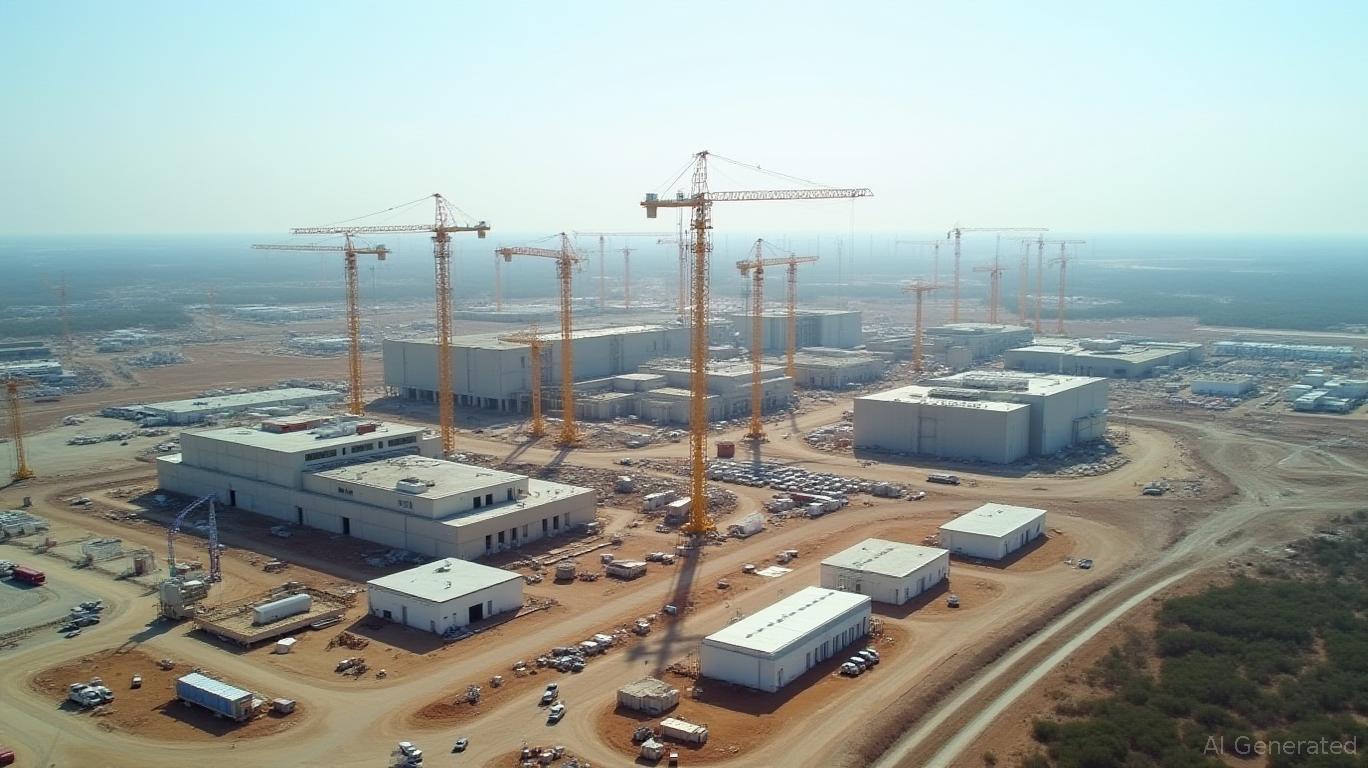Texas Instruments' $60B Semiconductor Gamble: A Blueprint for U.S. Tech Supremacy
The semiconductor industry is undergoing a seismic shift, and
(TXN) has just thrown down a $60 billion gauntlet. With plans to build seven new fabrication plants (fabs) in Texas and Utah—marking the largest U.S. investment in foundational chip manufacturing to date—the company is betting big on reshoring as the key to global tech dominance. This move, alongside TSMC's $40 billion Arizona fab and the Biden administration's CHIPS Act, signals a structural realignment of the global semiconductor supply chain. For investors, the question is clear: Is this a fleeting trend or a generational opportunity?The Reshoring Revolution
The U.S. semiconductor industry has long relied on Asian manufacturing hubs like Taiwan and South Korea, exposing critical industries—from defense to electric vehicles—to geopolitical risks and supply chain bottlenecks. Texas Instruments' $60B investment flips this script. By focusing on 300mm wafer fabrication for analog and embedded chips—critical for everything from smartphones to aerospace systems—TI is not just building factories; it's anchoring a new era of domestic production.

The CHIPS Act, which provides $52 billion in subsidies and tax credits for U.S. semiconductor production, is the linchpin of this shift. TI's Sherman, Texas site—set to begin production in 2025—will receive up to $40 billion in funding, with $1.6 billion directly tied to CHIPS incentives. This public-private partnership reduces financial risk for companies and ensures long-term cost leadership. For investors, this framework creates a “win-win”: companies gain capital to scale, while the U.S. secures supply chain resilience.
Why This Matters for Investors
The reshoring trend is far from a Texas Instruments solo act. TSMC's $40 billion Arizona plant, Intel's $20B Ohio chip complex, and even NVIDIA's AI-driven chip designs are all part of a broader push to “onshore” critical manufacturing. The data underscores the momentum:
Texas Instruments' stock, however, stands out. Its focus on analog chips—a $80 billion market with minimal competition—positions it as a “must-have” supplier for industries from EVs to medical devices. Analysts estimate that TI's new fabs could increase its annual chip output by 50%, translating to a 15-20% revenue boost by 2030.
Ripple Effects: Geopolitical and Economic
The strategic implications are profound. A stronger domestic semiconductor base reduces reliance on Taiwan's TSMC, which currently manufactures 50% of the world's advanced chips. For industries like defense, this means less vulnerability to trade wars or supply disruptions. For investors, it signals a safer, more diversified portfolio—especially as analog chips' long product cycles (5-10 years) offer steady cash flows.
Yet challenges remain. Scaling 300mm fabs requires flawless execution, and TI's $60B bet could strain near-term margins. However, the long-term payoff—monopolizing analog chips in a $2 trillion tech ecosystem—is worth the risk.
Investment Thesis: Bet on U.S. Exposure
Investors should prioritize companies with direct ties to U.S. semiconductor reshoring. Key criteria:
1. Government Incentives: Firms like TI, TSMC, and Intel that qualify for CHIPS Act subsidies.
2. Demand Stability: Analog/ embedded chip makers (TI, ON Semiconductor) with irreplaceable tech.
3. Supply Chain Control: Companies reducing reliance on Asian foundries, such as NVIDIA's in-house chip production.
Avoid pure-play Asian manufacturers (Samsung, SK Hynix) unless they pivot to U.S. investments.
Conclusion: The Next Tech Supremacy Play
Texas Instruments' $60 billion bet is more than a corporate milestone—it's a blueprint for U.S. tech leadership. By anchoring foundational chip production stateside, TI and its peers are rewriting the rules of global supply chains. For investors, this is a generational call: Build portfolios around companies that are reshoring, not just surviving, but thriving in a post-Asia semiconductor world.
The future of tech isn't in Taiwan—it's in Texas. And that's where investors should look for returns.

Comments
No comments yet